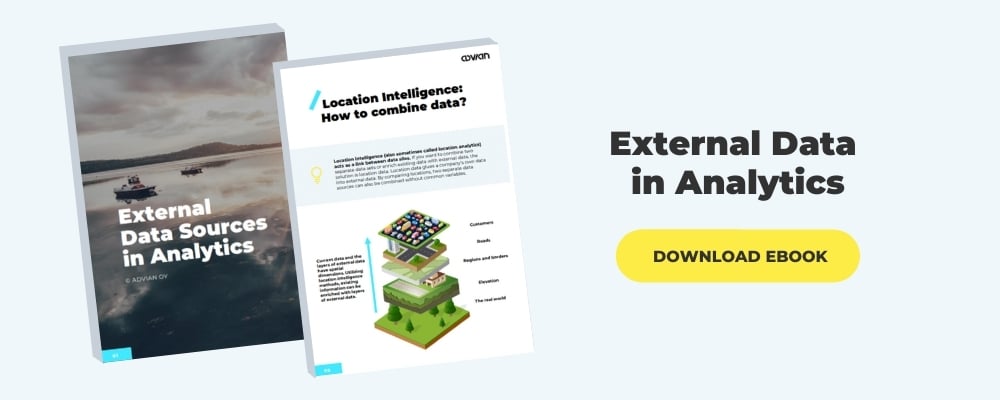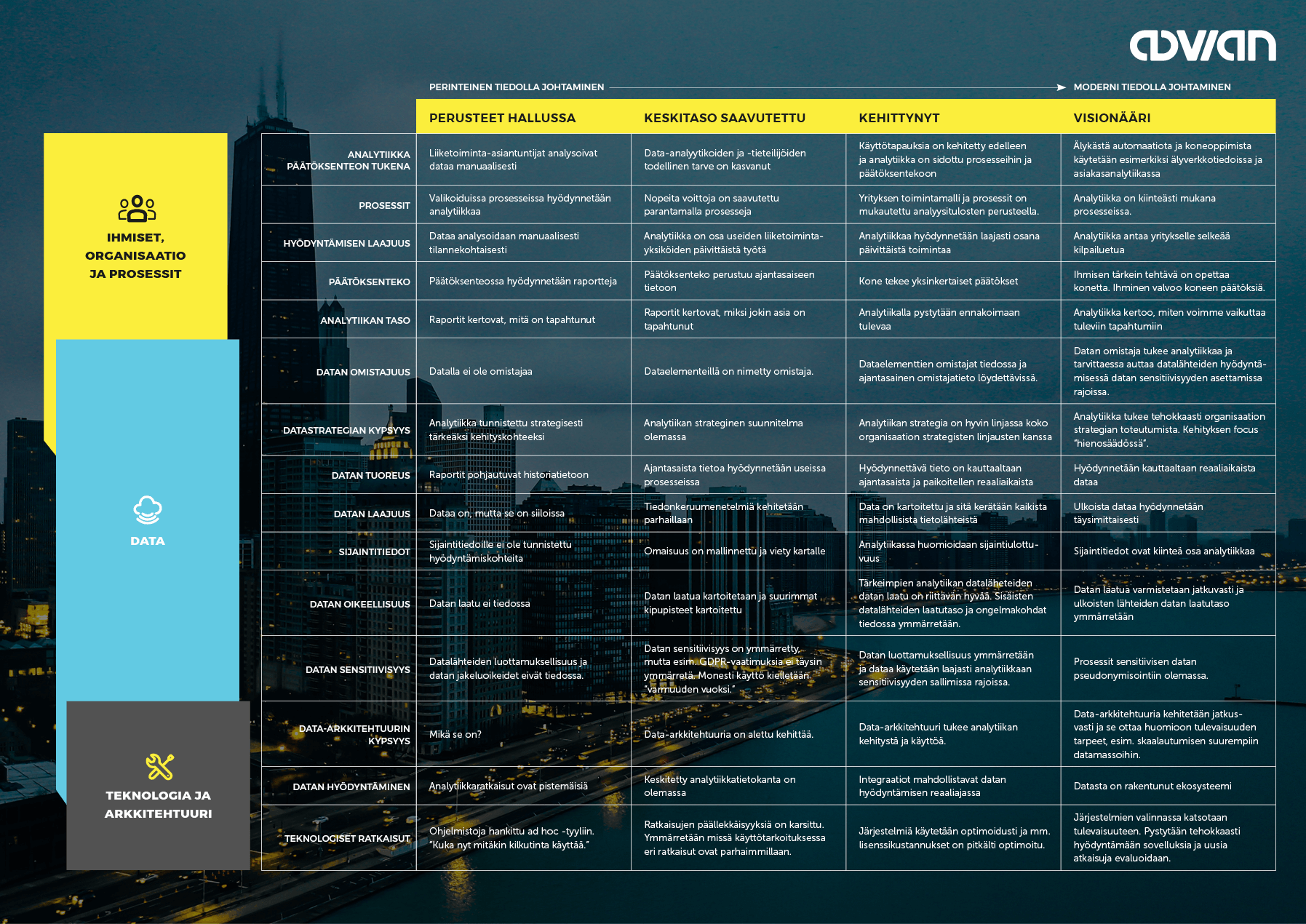Location Intelligence has been used for a long time in many industries, including logistics and retail, routing and supply chain optimisation, and site planning. Some businesses are entirely based on route optimization engines utilizing location intelligence and machine learning. However, not all industries are in the same situation. What are the typical mistakes that go hand in hand with utilizing location intelligence and how to avoid pitfalls?
1. The potential of location intelligence is not identified
Location intelligence is the management of location data - advanced analytics where location plays a key role. It's also an important part of modern knowledge management.
The potential and benefits of location intelligence are still poorly understood, and in many organizations internal expertise remains limited. Perhaps it can be said that location intelligence is an underutilized resource in organizations.
It all starts with understanding of how location affects your business. For example, in the transportation industry it is time-bound - ice cream needs to be delivered at a certain temperature to the stores' freezer boxes. In the insurance industry, on the other hand, location affects risks. Location intelligence can be utilized, for example, in the assessment and forecasting of flood and storm damage and in the definition of insurance terms based on the location of the place of insurance.
2. Location is left as only points on a map
If location data is not incorporated into the overall architecture of the company and combined with other data, the business benefits will be non-existent. Experts are stuck drawing maps, and all the greatness that geographical information science has brought to the world is not being exploited to its full potential.
Maps are valuable in a sense that they are familiar to everyone. A map is a familiar environment for presenting information that is intuitive to many people. However, visualization should by no means be the last step.
3. Resources are missing
Even if the value of location intelligence is recognized in the organization, it's not always enough. The more challenging the problem, the harder it is to find top professionals with just the right profile.
Location intelligence is a completely separate field and requires both extensive and very specific expertise - including methodological and technical expertise in remote sensing, 3D modeling, geoinformatics and geography.
4. External data sources remain unused
The use of external data effectively enriches the data that's already found in the company's own systems. The challenge is to find relevant external data sources - a crusade into the jungle of open and commercial external data is not easy.
For example, if traffic jams are forecasted only with the help of traffic volume data collected by the company, and open weather data is not used, the estimate might not be very accurate.
💡 I have already written on Advian's blog about leveraging external data
5. The focus is on the rearview mirror
A map of the losses of a forest fire only tells what has already been destroyed. It is more useful to create a prediction model for the spread of the fire and to export the pre-chewed data to the extinguishing units.
If decisions are made manually by interpreting information, there is a long delay from data collection to decision execution.
How to get started - location intelligence in processes
If you’re still in the process of leveraging location data and location intelligence, how do you get started and what does it take from your organization?
1. Review your data
The first step is to make a data inventory: identify elements in your data and operations that are location-dependent.
What are the important location-bound elements? Where is data still missing a location element?
2. Visualize and brainstorm
If location intelligence isn’t already in use, it’s a good idea to start by outlining things on a map. Compared to staring at tables, visualization helps you better understand what the data is all about. Previously invisible hidden connections between different factors will start to emerge - what type of external data do we need more of?
However, as I mentioned earlier, we shouldn't get stuck in drawing maps, as this is only the initial stage in building analytics.

3. Define goals
Often the most difficult thing to manage is the ability to understand the business: why is data being collected and what is being achieved with analytics? It's not necessary to outline a roadmap that extends beyond five years, unless required by the business. It makes sense to take more relevant steps first, and only then optimize the details.
Maybe you're already able to see the potentials of location intelligence for your business, but can't yet outline concrete ways to leverage it or prioritise the development work? Learn more about our Location Intelligence Innovation -workshop. 👇 The workshop is particularly well-suited for organizations that have come a long way in knowledge management, but do not yet utilize location data in their analytics. As a result of the workshop, you'll get a concrete and reasoned insight into the most fruitful development targets in location intelligence.
4. Include external data
Now we get to the core of location intelligence: location data is like tape that holds together a company’s own data to external data. By comparing and proportioning the location data of two data sources, the sources can also be combined without common variables.
What external data do I need? How achievable is the data I crave? Is it behind a payment wall or registration, or is it completely free? At what resolution, temporal or spatial, do I need information? At this point, it may make sense to seek outside help unless you have an in-house geoinformatics or location intelligence expert.
5. Only the sky as the limit - but keep your feet on the ground
Going forward, if your business is requiring or it makes sense, move on to automation, routing, forecasting, and other more advanced solutions. The scope of the solution depends on your industry and the scale of your operations. How far should the solution go? Don't bite more than you can chew.
Location intelligence is not a one-time project, but part of continuous business development - that is, business-driven analytics. The results are achieved when you experiment agilely, dare to fail, learn from your mistakes, and scale your successes into your business - part of processes and services.
Do you want to talk more?
Book an online meeting with us here 👇
Topics: Location Intelligence, Advanced Analytics, Leadership, GeoAI, Satellite Analytics














